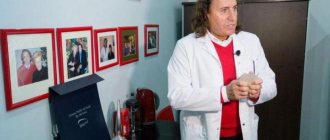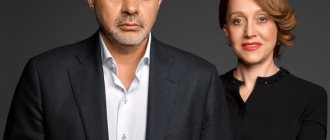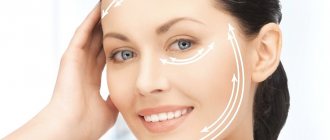The proportions of the nose determine the harmony of facial features. Plastic surgeons at the DOCTORPLASTIC clinic take these features into account and provide excellent rhinoplasty results.
Changing the size and shape of the nose is not only aesthetic. Such operations are also designed to normalize and improve nasal breathing. Therefore, in our clinic, nose surgery is performed by doctors who are not only qualified plastic surgeons with extensive experience, but also certified otolaryngologists.
All photos of rhinoplasty
Patients trust us to correct defects in appearance due to the following advantages of our specialists:
- experience in the field of plastic surgery - 10 years or more;
- knowledge of innovative methods and new technologies for performing operations on ENT organs;
- taking into account the aesthetic and functional aspects of rhinoplasty;
- continuous improvement and advanced training (including abroad).
Before surgeryAfter surgery
Types and methods of rhinoplasty
Depending on the goals of the intervention, operations can be performed on different areas of the nose:
- tip (shortening, displacement, rotation);
- back (removal of hump or replacement of back tissue);
- wings (correction of width, length);
- nasal septum (change in the size and shape of the nose, improved nasal breathing).
Prices
| Type of transaction | Cost of the operation, rub. |
| Plastic surgery of the tip of the nose | 180 000 |
| Rhinoplasty with osteotomy | 250 000 |
| Rhinoplasty with septoplasty | 280 000 |
| Revision rhinoplasty | 280 000 |
Rhinoplasty involves various types of operations, which according to the method of surgical access can be divided into two groups:
- Closed rhinoplasty.
The endovasal method of access when performing intervention is the most common. The incisions are made inside, on the nasal mucosa, so the scars remain completely invisible.
First, the surgeon makes an incision and peels away the soft tissue from the bones and cartilage. Then he performs the planned manipulations (removing excess tissue, increasing volume, correcting shape), after which he applies sutures.
- Open rhinoplasty.
This type of rhinoplasty is indicated when large-scale intervention is necessary. The incision is made in the columella area. It is a vertical fold above the skin of the nasal septum.
Using a small incision, the surgeon removes soft tissue and corrects the position, shape and volume of bone and cartilage tissue. The advantages of open access are complete visual control by the surgeon of all actions performed.
The type of rhinoplasty and the method of its implementation (open or closed) are determined individually, taking into account the desired result and the characteristics of the patient’s face. The doctors of our clinic are proficient in advanced plastic surgery methods and provide excellent results from such operations.
Plastic surgery (rhinoplasty) by Alexey Samsonov (Dom-2) on video:
| The classical canon of proportions of the human face has long been formulated in the fine arts. In particular, it is generally accepted that: | |
| |
Preparation for rhinoplasty of the nose
The success of the operation depends on many components, including preparatory measures. The preparation includes the following steps:
- Consultation.
The surgeon talks about possible options for rhinoplasty and the nuances of the rehabilitation period. The doctor evaluates the respiratory function of the nose, clarifies whether the patient has chronic diseases, allergies, or a tendency to keloid scars. To examine the internal structures of the nose, CT and radiography may be prescribed.
- Computer modelling.
To see what the nose will look like after rhinoplasty, a special program is used. Visualization helps the doctor show the patient the result of the operation that he can expect.
- Analyzes and examinations.
Before rhinoplasty, it is important to make sure that there are no contraindications and that the human body is ready for such interventions. To do this, the patient must submit:
- general urine analysis;
- blood chemistry;
- general blood analysis;
- coagulogram;
- tests for AIDS, RW, hepatitis;
- undergo a blood electrolyte test;
- electrocardiography.
Also, before rhinoplasty, you must submit a document containing information about your blood group and Rh factor. If indicated, radiography of the facial skeleton may be performed.
Immediately before the operation, you should refrain from drinking alcohol, smoking, and not taking anticoagulants. You need to wash your hair before surgery - you should not get the bandage wet after surgery.
Rhinoplasty is performed on an empty stomach. The patient is placed in a ward. Take a preliminary photo. Women are not prescribed surgery during their menstrual period.
Rehabilitation period
In the first 3–4 days after the intervention, there may be an increase in body temperature and weakness. The recovery period takes 5–14 days. During this time, the patient wears a plaster cast. You need to sleep on your back. You have to breathe through your mouth. No smoking. Do not touch or wet the bandage. After its removal, swelling and hematomas may persist, which gradually disappear. The result can be assessed after 2–12 months.
Complications
Early postoperative complications include excessive swelling, bleeding, lacrimation, hematomas, inflammation, and blockage of the sebaceous glands. Unpredictable tissue scarring and cartilage deformation may also occur.
Revision rhinoplasty
The need for such operations occurs in only 10% of patients. It is carried out if there is:
- initial deformations;
- errors in planning and carrying out the operation;
- unpredictable scarring;
- poor characteristics of the patient's skin.
Revision rhinoplasty is also performed in an open or closed manner. Silicone and autografts can be used. Repeated surgery is performed no earlier than 6 months after the primary. It takes 1–2 hours.
Not only Moscow residents can perform rhinoplasty surgery, make an appointment and get a consultation. Patients from Volgograd, Voronezh, Samara, Krasnoyarsk, Yekaterinburg, Kazan, Nizhny Novgorod, Novosibirsk, Omsk, Perm, Ufa, Rostov-on-Don, Chelyabinsk and other Russian cities come to our clinic.
Zholtikov Vitaly Vladimirovich
Date of birth: 1976.
Zholtikov Vitaly Vladimirovich - plastic surgeon, candidate of medical sciences, associate professor of the department of plastic surgery of St. Petersburg State Medical University named after. acad. I.P. Pavlova; member of the International Society of Aesthetic Plastic Surgeons (ISAPS), member of the American Society of Aesthetic Plastic Surgeons (ASAPS), full member of the Society of Plastic, Reconstructive and Aesthetic Surgeons of Russia (OPRES); Associate Member of the International Society of Plastic, Reconstructive and Aesthetic Surgeons (IPRAS); full member of the Society of Herniologists of Russia.
He is certified in general surgery, oral and maxillofacial surgery, and plastic surgery.
Education. In 2000 he graduated from St. Petersburg State Medical University. acad. I.P. Pavlova. In 2002, he completed residency training in the specialty “surgery” at the Faculty of Medicine of St. Petersburg State University. In 2002 he received specialization in plastic, reconstructive and aesthetic surgery.
Practical activities. From 2002 to 2003 he worked as a surgeon in the department of plastic, reconstructive, aesthetic and maxillofacial surgery of hospital No. 29. Since 2003: surgeon at the Center for Plastic and Reconstructive Surgery of the St. Petersburg State Medical Academy named after. I.I. Mechnikov. Since 2003: plastic surgeon at Plastic Surgery Clinic LLC. From 2011 to the present, he has been working as a plastic surgeon and chief physician at the Academy of Plastic Surgery, Medical Cosmetology and Aesthetic Dentistry “Atribeaute Clinique”.
Scientific activity. Speaker at scientific congresses and symposiums: • VI Congress of the “Russian Society of Plastic, Reconstructive and Aesthetic Surgeons” Moscow, December 2008 • VIII International Congress on Aesthetic Medicine named after. Evgenia Laputina. Moscow, February 2009 • I course ISAPS “Aesthetic surgery of the eyelids and periorbital region.” St. Petersburg, November 2009 • IX International Congress on Aesthetic Medicine named after. Evgenia Laputina. Moscow, February 2010 • II course ISAPS “Aesthetic breast surgery”. St. Petersburg, May 2010 • 20th ISAPS Congress. San Francisco, August 2010 • International Symposium “Innovations in Plastic Surgery”. Rostov-on-Don, October 2010 • VII Congress of the “Russian Society of Plastic, Reconstructive and Aesthetic Surgeons” Moscow, December 2010 • X International Symposium on Aesthetic Medicine. Moscow, January 2011 • International conference “Modern plastic aesthetic reconstructive surgery and breast cosmetology”. Rostov-on-Don, September 2011 • XI International Symposium on Aesthetic Medicine. Moscow, January 2012 • ISAPS International Course on Aesthetic Plastic Surgery and Minimally Invasive Rejuvenation Methods. St. Petersburg, June 2012 • Allergan Academy. St. Petersburg, July 2012 • 21st ISAPS Congress. Geneva, September 2012
Participant in scientific congresses and symposiums: • 10th European Congress on Plastic, Reconstructive and Aesthetic Surgery. Vienna, 2005 • 18th Congress of the International Society of Aesthetic Plastic Surgeons. Rio de Janeiro, August 2006 • 3rd and 5th Akademikliniken Congress on Aesthetic Surgery “Beauty through Knowledge”. Stockholm, 2007 and 2009 • 14th Congress of the International Confederation of Plastic, Reconstructive and Aesthetic Surgeons. Berlin, June 2007 • 19th ISAPS Congress. Melbourne, February 2008 • International Symposium on Blepharoplasty and Periorbital Surgery. Munich, December 2009 • 11th Congress of ESPRAS (European Society of Plastic, Reconstructive and Aesthetic Surgeons). Rhodes, 2009 • II international symposium “Rhinoplasty: aesthetics, function and prevention of complications.” Bergamo, March 2010 • International Congress “Aesthetic surgery of complex breasts: breast augmentation, tubular and ptosis breast surgery”, Amsterdam, December 2010 • VI International Congress “Aesthetic and reconstructive rhinoplasty”. Milan, March 2011 • 15th Congress of the International Confederation of Plastic, Reconstructive and Aesthetic Surgeons. Vancouver, May 2011 • VII multidisciplinary symposium “Aesthetic surgery and cosmetology”. Las Vegas, June 2011 • VII QMP-symposium “Aesthetic surgery”. Chicago (USA), October 2011 • International Symposium “Advanced Breast Surgery”. Munich, November 2011 • International Symposium “Advanced Body Shaping from Head to Toe”. New York, December 2011 • 46 ASAPS International Educational Symposium (Baker Gordon). Miami, February 2012 • III international symposium “Rhinoplasty: from basics to grace.” Bergamo, March 2012 • Annual Congress of ASAPS (American Society of Aesthetic Plastic Surgeons). Vancouver, May 2012 • V International master class “Secondary rhinoplasty”. Odessa, September 2012 • Course of facial plastic surgery. Regensburg, October 2012
Improvements: • 2001: cardiovascular surgery with a course of microsurgery. • 2001: laparoscopic surgery. • 2002: thermal injuries and plastic surgery. • 2003: rhinoplasty, augmentation mammoplasty, liposuction, breast reconstruction, surgical facial rejuvenation. • 2003: phlebology. • 2004: reduction mammoplasty, mastopexy, abdominoplasty. • 2004: clinical oncology. • 2004: modern laser technologies in medicine. • 2005: minimally invasive methods of facial rejuvenation, endoscopic facial rejuvenation. • 2006: breast augmentation using anatomical implants of the McGhan Matrix system, correction of breast asymmetry. • 2006: ligature surgery of the face and mammary glands. • 2006: anti-aging surgeries of the face and neck. Mammoplasty. Modern technologies. • 2007: correction of age-related skin changes. Dermal fillers. • 2007: breast augmentation using anatomical implants of the McGhan Matrix system - 2nd “advanced” course. • 2008: facial rejuvenation surgery. Body contouring: reduction mammoplasty, abdominoplasty, liposuction, lipofilling • 2008: augmentation mammoplasty and correction of the mammary glands using various forms of anatomical implants. • 2009: facial rejuvenation, correction of age-related changes in the paraorbital area. Ultrasonic liposuction. Breast reconstruction (expanders, implants, tissue flaps). Complex treatment of obesity, abdominoplasty, body lifting, thigh lift, brachioplasty. • 2010: breast reconstruction. • 2010: face lift with Silhouette Lift threads, Javier de Benito Clinic, Barcelona, Spain. • 2011: modern techniques for rejuvenation of the face and periorbital area.





